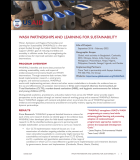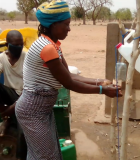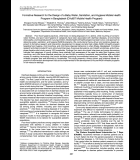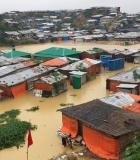Strengthening Household Ability to Respond to Development Opportunities II (SHOUHARDO II)
SHOUHARDO II (Strengthening Household Ability to Respond to Development Opportunities II) is a five-year June 2010-May 2015, USAID-funded Title II project designed to transform the lives of women and men in 370,000 poor and extreme poor (PEP) households in eleven of the poorest and most marginalized districts in Bangladesh by reducing their vulnerability to food insecurity.
Activity Description
The second phase, SHOUHARDO II, implemented from June 2010 to May 2011 in 11 of the poorest and most marginalized districts of the country, builds upon the successes of the initial SHOUHRDO program by maintaining a strong emphasis on improving livelihood security, food security, nutrition, poor and extreme poor (PEP), and women’s empowerment at the community level, while adding components aimed at strengthening local governance and improving adaptation to climate change. CARE Bangladesh implemented SHOUHARDO II with the assistance of 16 NGOs and 4 Technical Partners.
SHOUHARDO II prioritized community-based interventions and placed considerable emphasis on the capacity of Village Development Committees (VDCs) to not only assess local factors constraining food security but to also oversee program efforts to address them. In particular VDC, with program staff, were charged with coordinating the efforts of four thematic groups in target communities. They included:
- Core Occupational Groups aimed at increases in food production, and/or income (targeting both men and women);
- Growth Monitoring and Promotion (GMP) Groups aimed at improved nutrition and health status of children under 5 years of age;
- Early Childhood Community Development (ECCD) Groups for mothers and children between 0 and 8 years of age); and
- Empowerment, Knowledge and Transformative Action (EKATA) Groups focused on educating women and girls on empowerment and protection.
Expected Outcomes
- “Availability of" and "access to" nutritious foods enhanced and protected for 370,000 PEP households.
- Improved health, hygiene and nutrition status of 281,000 children under 2 years of age.
- PEP women and adolescent girls empowered in their families, communities and Union Parishad.
- Local elected bodies and government service providers responsiveness and accountability to the PEP increased.
- Targeted community members and government institutions are better prepared for, mitigate, and respond to disasters and adapt to climate change.
Actual Outcomes
- Improved hand washing has been correlated with lower rates of diarrhea, and this result is consistent with the declines in diarrhea prevalence
- Access to improved drinking water source increased from 59.5 percent at baseline to 77.6 percent across all regions by endline.
- The percent of households with access to an improved sanitation facility increased from 20.3 percent at the start of the program to 52.8 percent by the end.





